Readout Integrated Circuit for Small-Sized and Low-Power Gas Sensor Based on HEMT Device
Abstract
:1. Introduction
2. Proposed System Architecture
2.1. High-Electron-Mobility Transistor Device
2.2. Proposed Readout Integrated Circuit and Calibration
3. Circuit Implementation
3.1. Negative Voltage Generator
3.2. Transimpedance Amplifier with Nested Chopper
3.3. Third-Order Delta-Sigma ADC
4. Measurements
5. Conclusions
Author Contributions
Funding
Institutional Review Board Statement
Informed Consent Statement
Data Availability Statement
Acknowledgments
Conflicts of Interest
References
- Khan, M.A.H.; Rao, M.V.; Li, Q. Recent Advances in Electrochemical Sensors for Detecting Toxic Gases: NO2, SO2 and H2S. Sensors 2019, 19, 905. [Google Scholar] [CrossRef] [PubMed] [Green Version]
- Safety and Health Magazine. Available online: https://www.safetyandhealthmagazine.com/articles/the-pros-and-cons-of-electrochemical-sensors-2 (accessed on 1 September 2011).
- Anderson, T.; Ren, F.; Pearton, S.; Kang, B.; Wang, H.; Chang, C.; Lin, J. Advances in Hydrogen, Carbon Dioxide, and Hydrocarbon Gas Sensor Technology Using GaN and ZnO-Based Devices. Sensors 2009, 9, 4669–4694. [Google Scholar] [CrossRef] [PubMed] [Green Version]
- Halfaya, Y.; Bishop, C.; Soltani, A.; Sundaram, S.; Aubry, V.; Voss, P.L.; Salvestrini, J.-P.; Ougazzaden, A. Investigation of the Performance of HEMT-Based NO, NO2 and NH3 Exhaust Gas Sensors for Automotive Antipollution Systems. Sensors 2016, 16, 273. [Google Scholar] [CrossRef]
- Dong, Y.; Son, D.-H.; Dai, Q.; Lee, J.-H.; Won, C.-H.; Kim, J.-G.; Chen, D.; Lee, J.-H.; Lu, H.; Zhang, R.; et al. High Sensitive pH Sensor Based on AlInN/GaN Heterostructure Transistor. Sensors 2018, 18, 1314. [Google Scholar] [CrossRef] [Green Version]
- Eliza, S.; Dutta, A. Ultra-high sensitivity gas sensors based on GaN HEMT structures. In Proceedings of the International Conference on Electrical & Computer Engineering, Dhaka, Bangladesh, 18–20 December 2010. [Google Scholar]
- Ranjan, A.; Agrawal, M.; Radhakrishnan, K.; Dharmarasu, N. Pt/AlGaN/GaN HEMT based ammonia gas sensors. In Proceedings of the IEEE 9th International Nanoelectronics Conferences, Kuching, Malaysia, 3–5 July 2019. [Google Scholar]
- Sokolovskij, R.; Lervolino, E.; Zhao, C.; Wang, F.; Yu, H.; Santagata, F.; Sarro, P.; Zhang, G. Pt-AlGaN/GaN HEMT-sensor layout optimization for enhancement of hydrogen detection. In Proceedings of the IEEE Sensors, Glasgow, UK, 29 October–1 November 2017. [Google Scholar]
- Hung, S.; Chang, C.; Hsu, C.; Chu, B.; Lo, C.; Hsu, C.; Pearton, S.; Holzworth, M.; Whiting, P.; Rudawski, N.; et al. SnO2 functionalized AlGaN/GaN high electron mobility transistor for hydrogen sensing applications. Int. J. Hydrog. Energy 2012, 37, 13783–13788. [Google Scholar] [CrossRef]
- Ferrari, A.; Meyer, J.; Scardaci, V.; Casiraghi, C.; Lazzeri, M.; Mauri, F.; Piscanec, S.; Jiang, D.; Novoselov, K.; Roth, S.; et al. Raman Spectrum of Graphene and Graphene Layers. Phys. Rev. Lett. 2006, 97, 187401. [Google Scholar] [CrossRef] [Green Version]
- Wang, X.; Wang, X.; Feng, C.; Yang, C.; Wang, B.; Ran, J.; Xiao, H.; Wang, C.; Wang, J. Hydrogen sensors based on AlGaN/AlN/GaN HEMT. Microelectron. J. 2008, 39, 20–23. [Google Scholar] [CrossRef]
- Ahn, J.; Kim, D.; Park, K.; Yoo, G.; Heo, J. Pt-Decorated Graphene Gate AlGaN/GaN MIS-HEMT for Ultrahigh Sensitive Hydrogen Gas Detection. IEEE Trans. Electron Devices 2021, 68, 1255–1261. [Google Scholar] [CrossRef]
- Chung, J.; Hoke, W.; Chumbes, E.; Palacios, T. AlGaN/GaN HEMT With 300-GHz fmax. IEEE Electron Device Lett. 2010, 31, 195–197. [Google Scholar] [CrossRef]
- Mishra, U.; Parikh, P.; Wu, Y. AlGaN/GaN HEMTs-an overview of device operation and applications. Proc. IEEE 2002, 90, 1022–1031. [Google Scholar] [CrossRef] [Green Version]
- Bong, J.; Kwon, Y.; Kim, D.; Min, K. Negative charge pump circuit with large output current and high power efficiency. IEICE Electron. Express 2009, 6, 304–309. [Google Scholar] [CrossRef] [Green Version]
- Chunha, A.; Schneider, M.; Galup, C. An MOS transistor model for analog circuit design. IEEE J. Solid-State Circuits 1998, 33, 1510–1519. [Google Scholar]
- Silveria, F.; Flandre, D.; Jespers, P. A gm/ID based methodology for the design of CMOS analog circuits and its application to the synthesis of a silicon-on-insulator micropower OTA. IEEE J. Solid-State Circuits 1996, 31, 1314–1319. [Google Scholar] [CrossRef]
- Harrison, R.; Charles, C. A low-power low-noise CMOS amplifier for neural recording applications. IEEE J. Solid-State Circuits 2003, 38, 958–965. [Google Scholar] [CrossRef]
- Corner, D.J.; Corner, D.T. Using the weak inversion region to optimize input stage design of CMOS op amps. IEEE Trans. Circuits Syst. II Express Briefs 2004, 51, 8–14. [Google Scholar]
- Hogervorst, R.; Tero, J.; Eschauzier, R.; Huijsing, J. A compact power-efficient 3 V CMOS rail-to-rail input/output operational amplifier for VLSI cell libraries. IEEE J. Solid-State Circuits 1994, 29, 1505–1513. [Google Scholar]
- Monticelli, D. A quad CMOS single-supply op amp with rail-to-rail output swing. IEEE J. Solid-State Circuits 1986, 21, 1026–1034. [Google Scholar] [CrossRef] [Green Version]
- De Langen, K.; Huijsing, J. Compact low-voltage power-efficient operational amplifier cells for VLSI. IEEE J. Solid-State Circuits 1998, 33, 1482–1496. [Google Scholar] [CrossRef] [Green Version]
- Bakker, A.; Thiele, K.; Huijsing, J. A CMOS nested chopper instrumentation amplifier with 100 nV offset. IEEE J. Solid-State Circuits 2000, 35, 1877–1883. [Google Scholar] [CrossRef]
- Sun, H.; Fang, D.; Jia, K.; Maarouf, F.; Qu, H.; Xie, H. A Low-Power Low-Noise Dual-Chopper Amplifier for Capacitive CMOS-MEMS Accelerometers. IEEE Sens. J. 2011, 11, 925–933. [Google Scholar] [CrossRef]
- Enz, C.; Temes, G. Circuit techniques for reducing the effects of op-amp imperfections: Autozeroing, correlated double sampling, and chopper stabilization. Proc. IEEE 1996, 84, 1584–1614. [Google Scholar] [CrossRef] [Green Version]
- Enz, C.; Vittoz, E.; Krummenacher, F. A CMOS chopper amplifier. IEEE J. Solid-State Circuits 1987, 22, 335–342. [Google Scholar] [CrossRef]
- Lee, J.; Oh, Y.; Oh, S.; Chae, H. Low Power CMOS-Based Hall Sensor with Simple Structure Using Double-Sampling Delta-Sigma ADC. Sensors 2020, 20, 5285. [Google Scholar] [CrossRef] [PubMed]
- Bindra, H.; Lokin, C.; Schinkel, D.; Annema, A.; Nauta, B. A 1.2-V Dynamic Bias Latch-Type Comparator in 65-nm CMOS with 0.4-mV Input Noise. IEEE J. Solid-State Circuits 2018, 53, 1902–1912. [Google Scholar] [CrossRef] [Green Version]
- Nuzzo, P.; Bernardinis, F.; Terreni, P.; Plas, G. Noise Analysis of Regenerative Comparators for Reconfigurable ADC Architectures. IEEE Trans. Circuits Syst. I Regul. Pap. 2008, 55, 1441–1454. [Google Scholar] [CrossRef]
- Mohieldin, A.; Sinencio, E.; Martinez, J. Nonlinear effects in pseudo differential OTAs with CMFB. IEEE Trans. Circuits Syst. II Analog Digit. Signal Process. 2003, 50, 762–770. [Google Scholar] [CrossRef]
- Suadet, A.; Kasemsuwan, V. A CMOS inverter-based class-AB pseudo differential amplifier for HF applications. In Proceedings of the IEEE International Conference of Electron Devices and Solid-State Circuits, Hong Kong, China, 15–17 December 2010. [Google Scholar]
- Chae, Y.; Han, G. Low Voltage, Low Power, Inverter-Based Switched-Capacitor Delta-Sigma Modulator. IEEE J. Solid-State Circuits 2009, 44, 458–472. [Google Scholar] [CrossRef]
- Avalur, K.; Azeemuddin, S. Automotive hybrid voltage regulator design with adaptive LDO dropout using load-sense technique. In Proceedings of the IEEE Asia Pacific Conference on Circuits and Systems, Ishigaki, Japan, 17–20 November 2014. [Google Scholar]

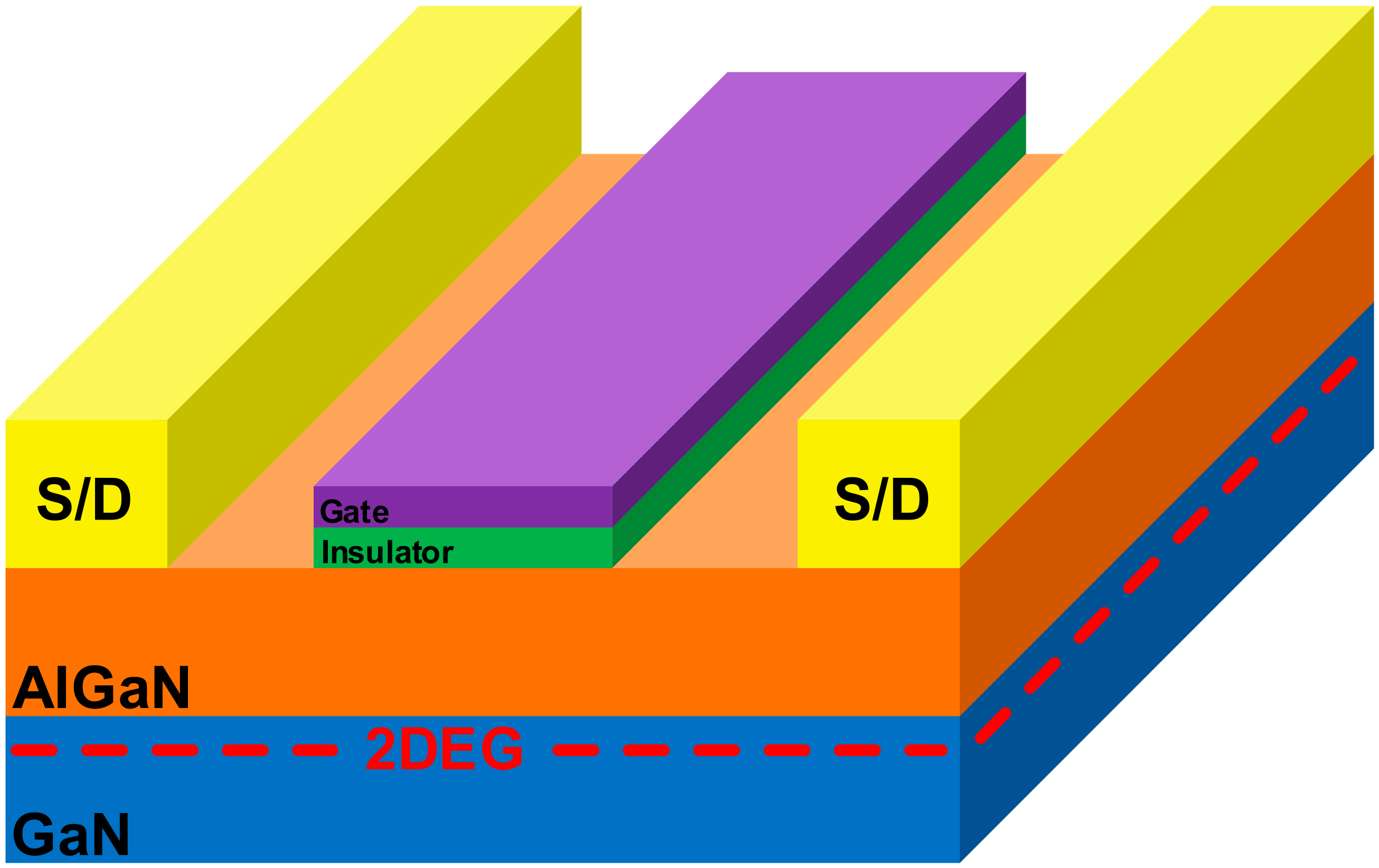






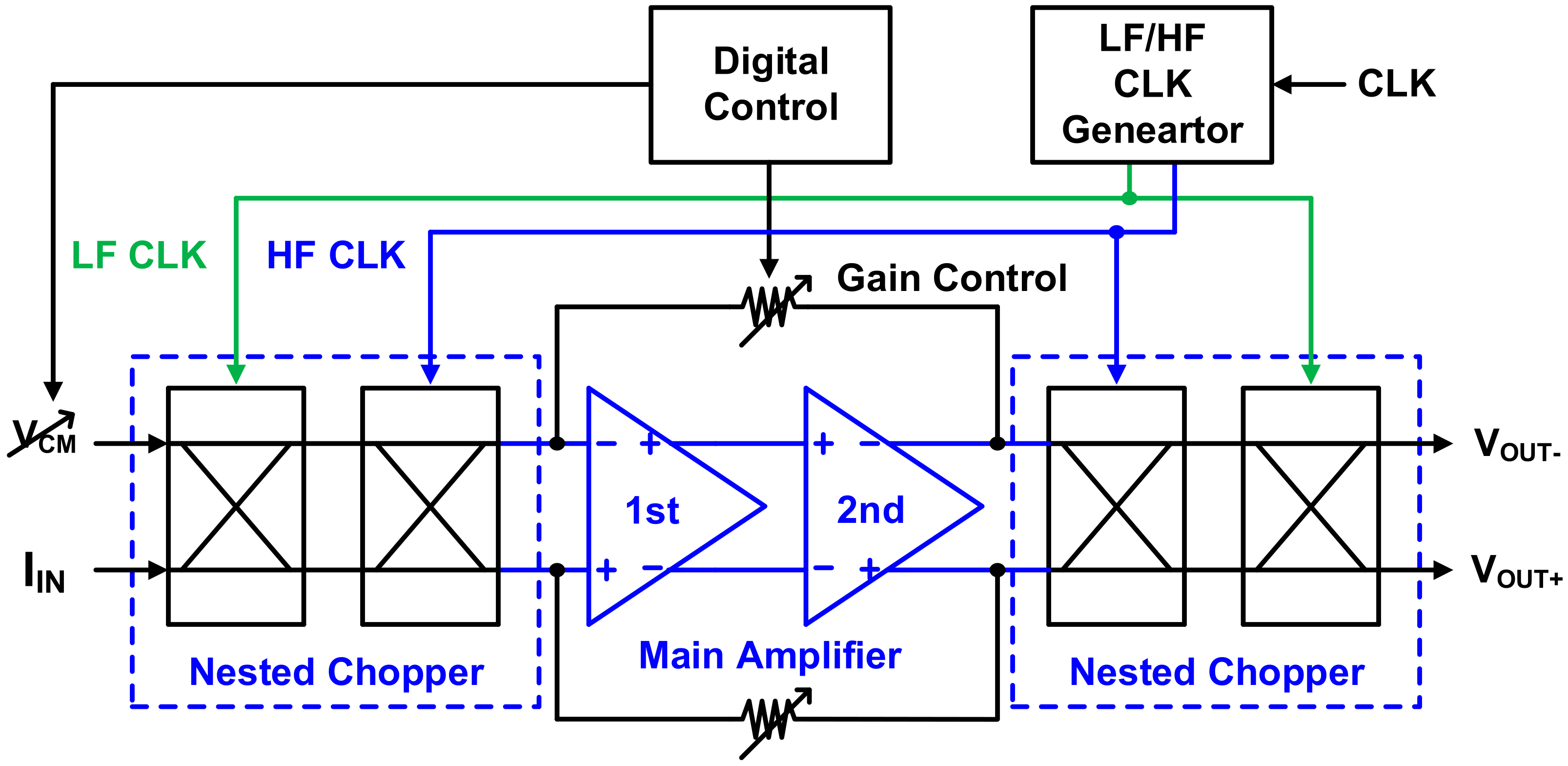

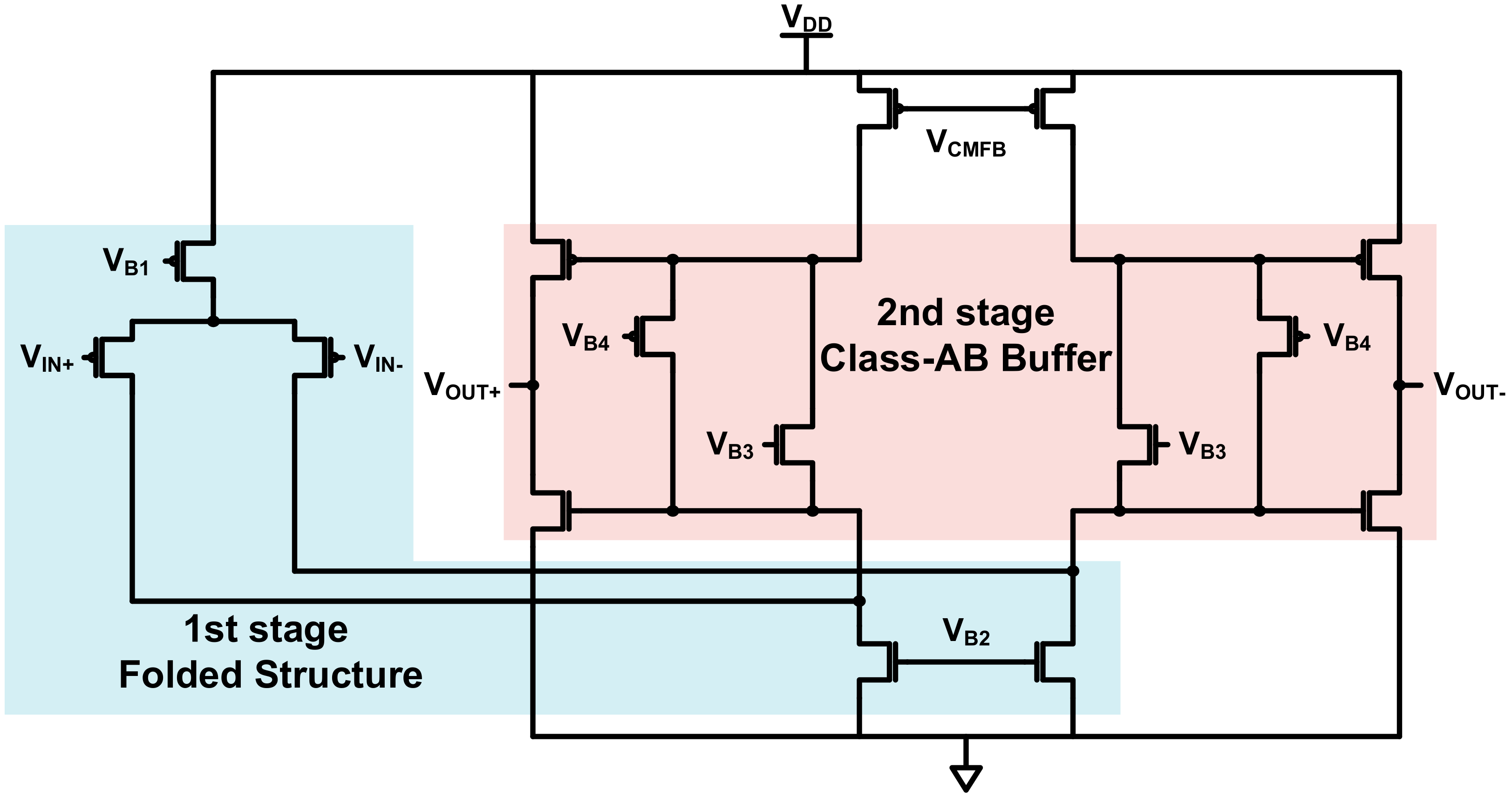

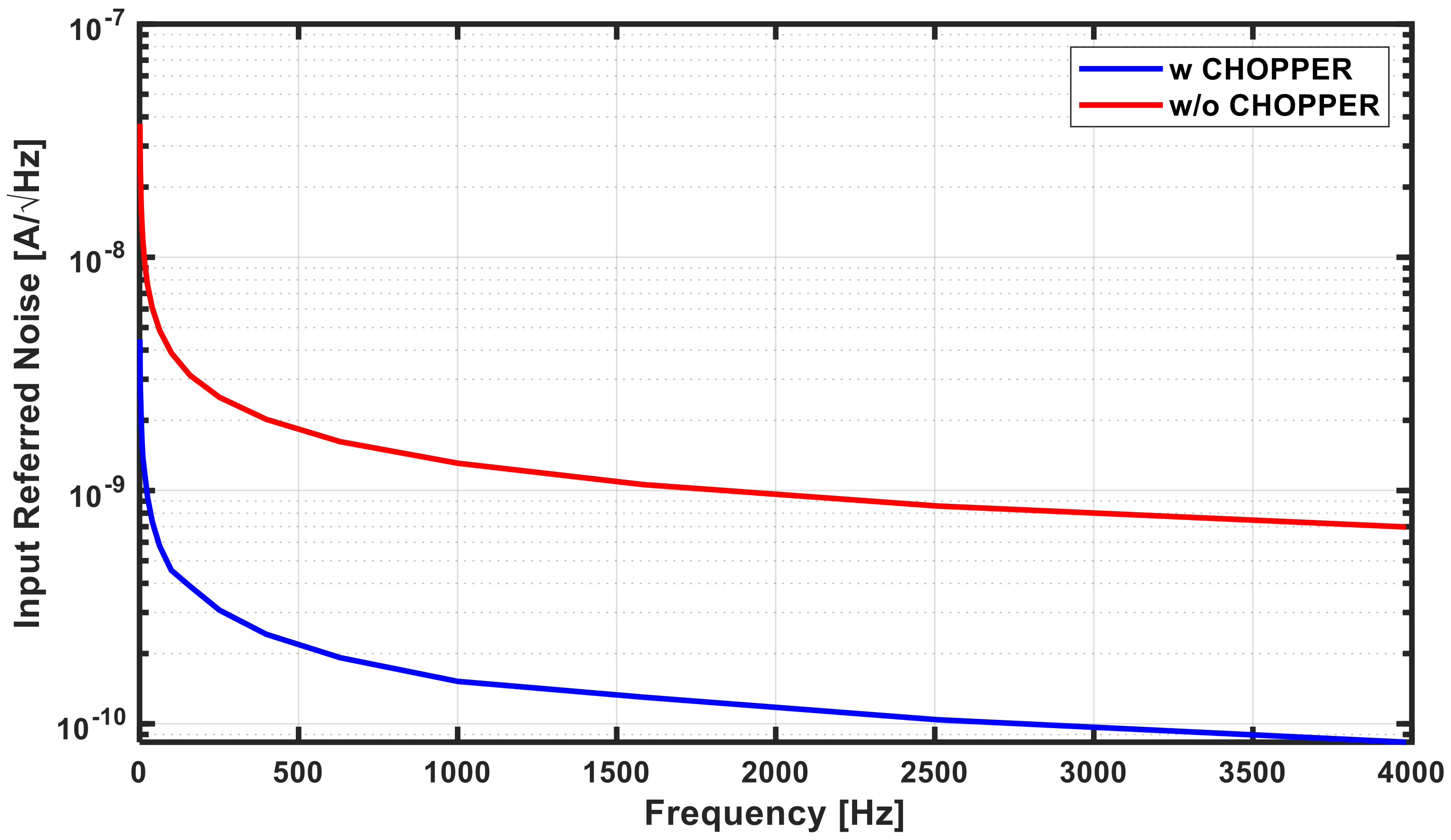

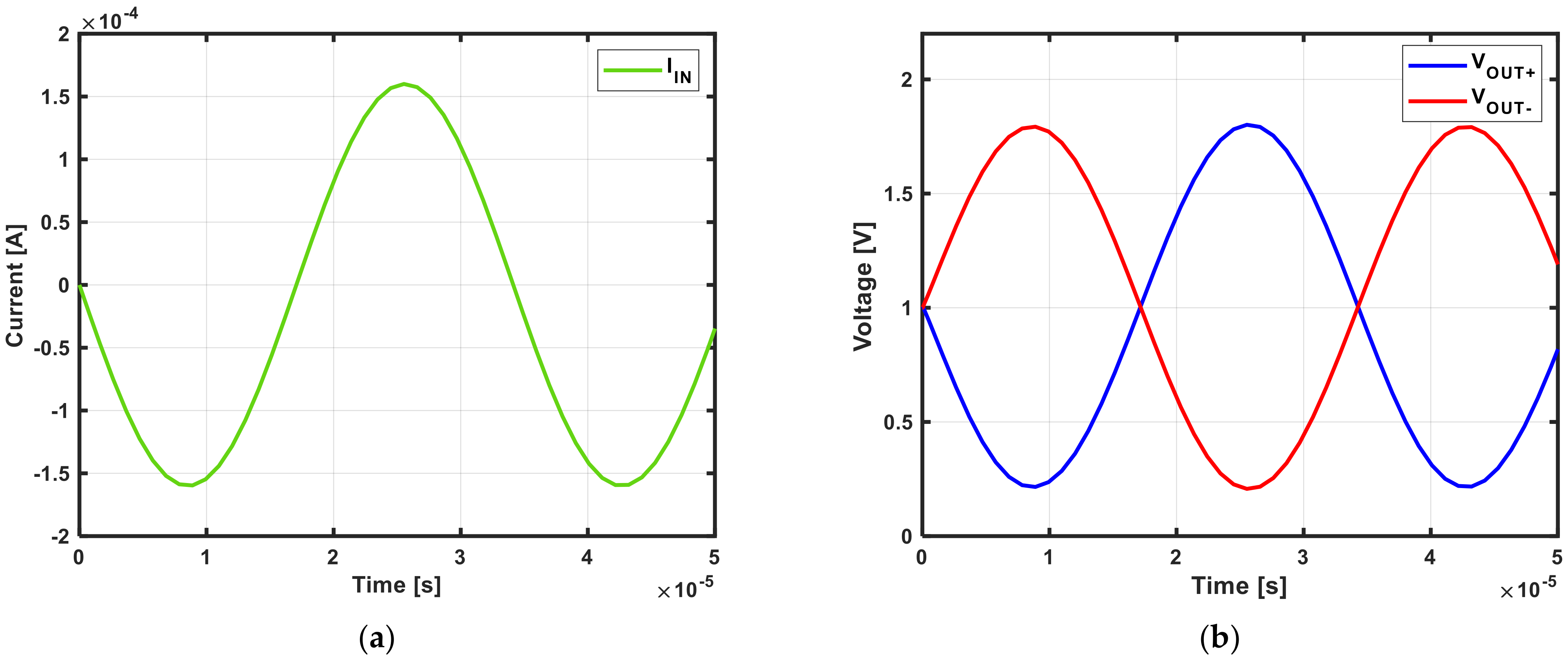
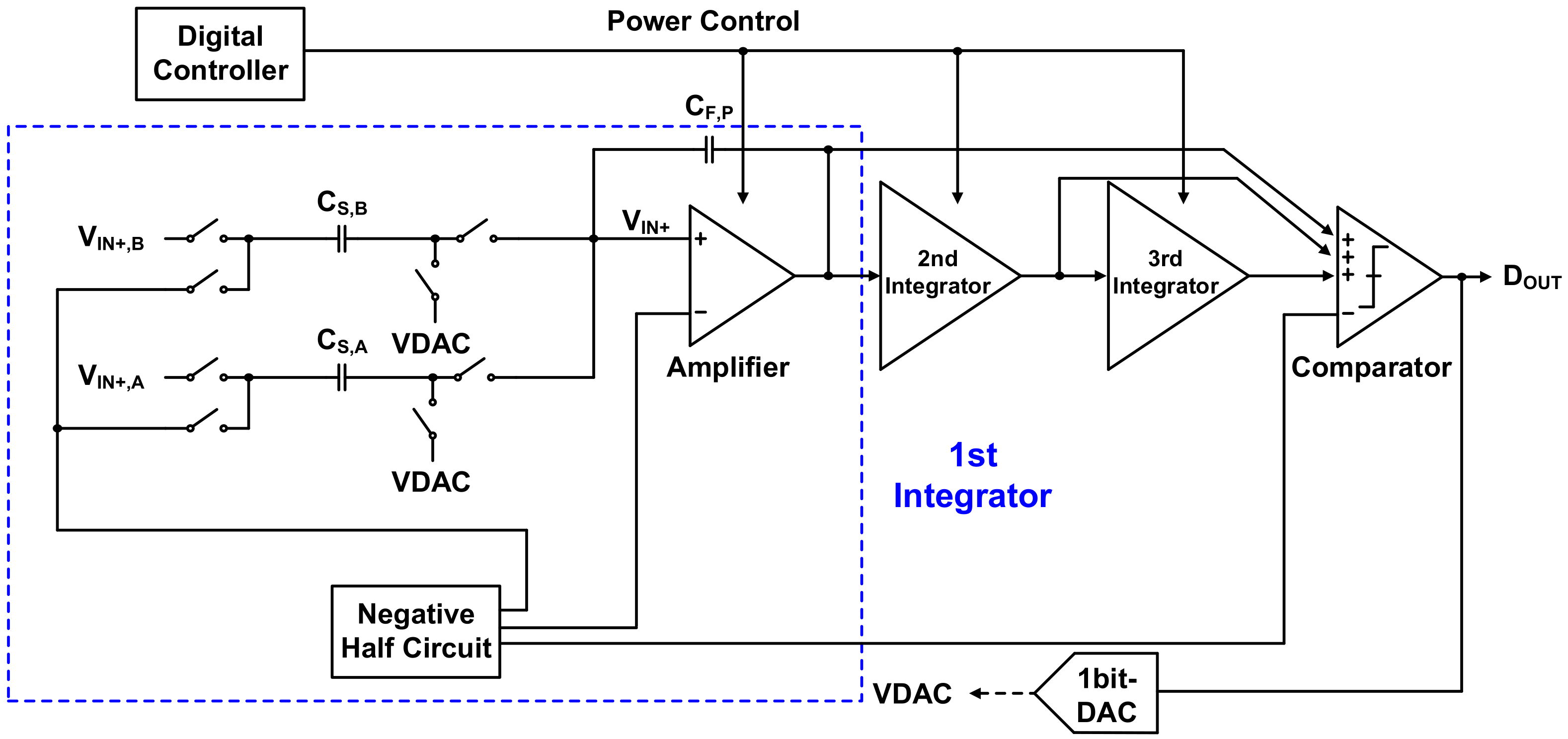

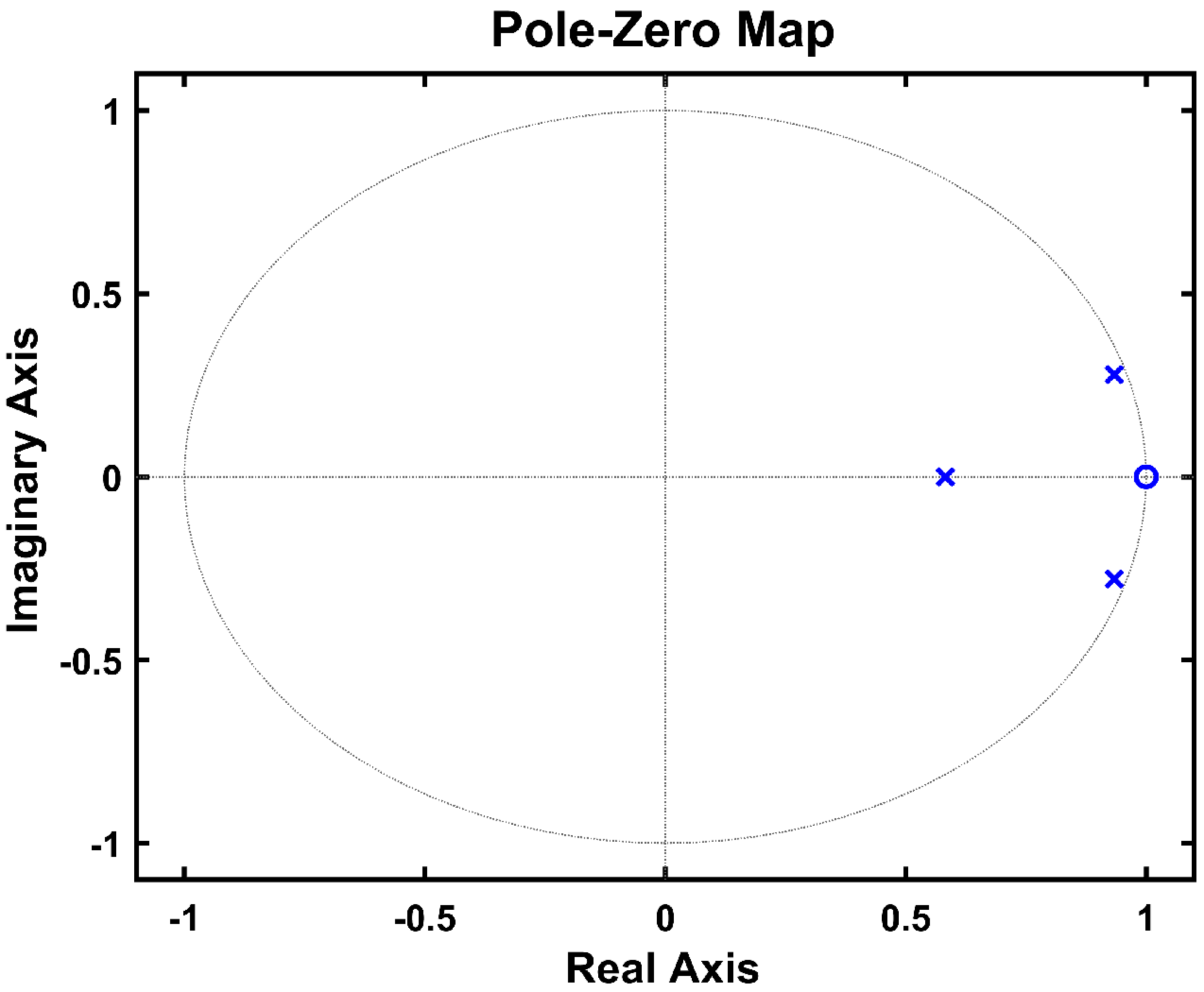
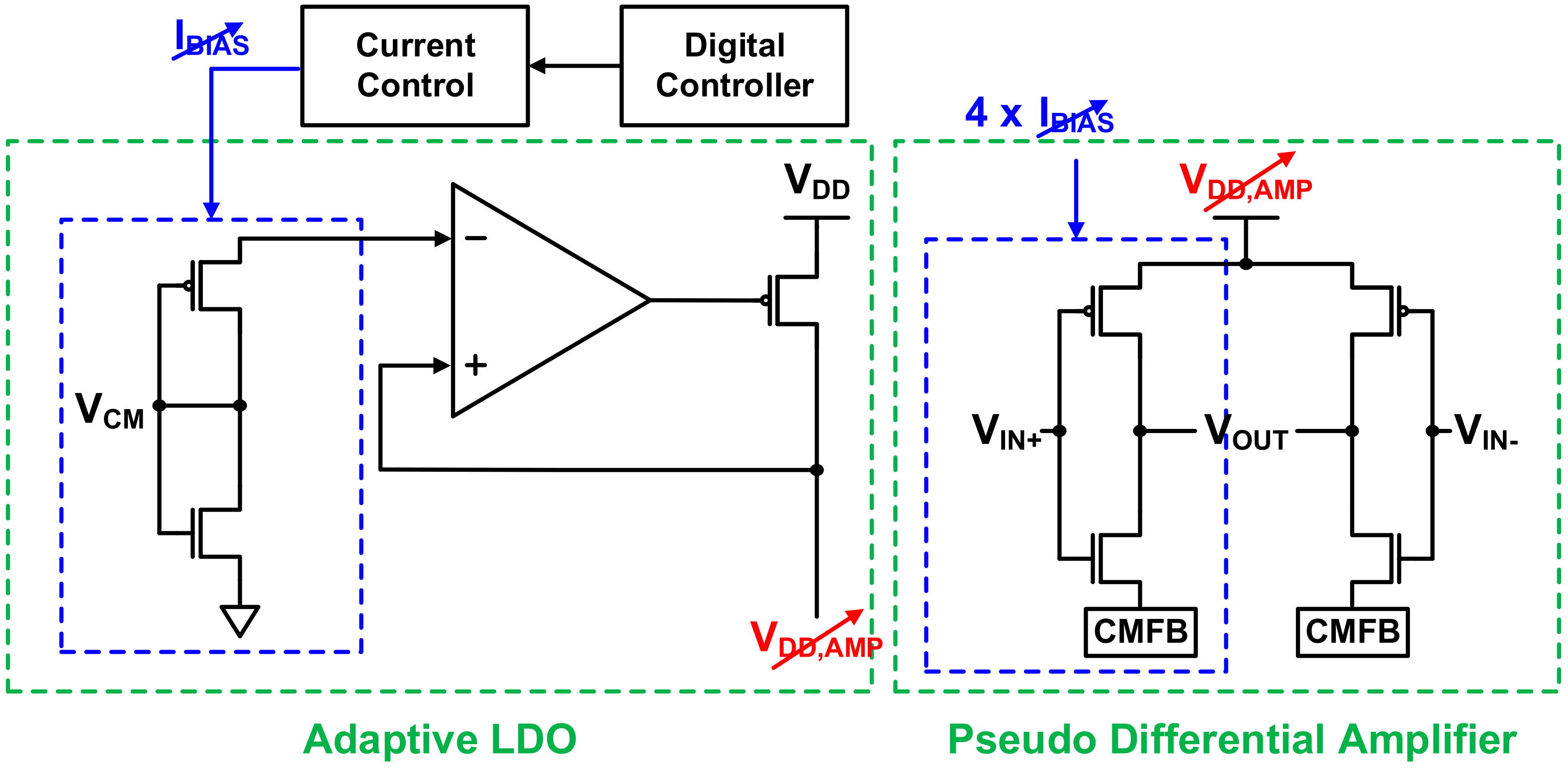
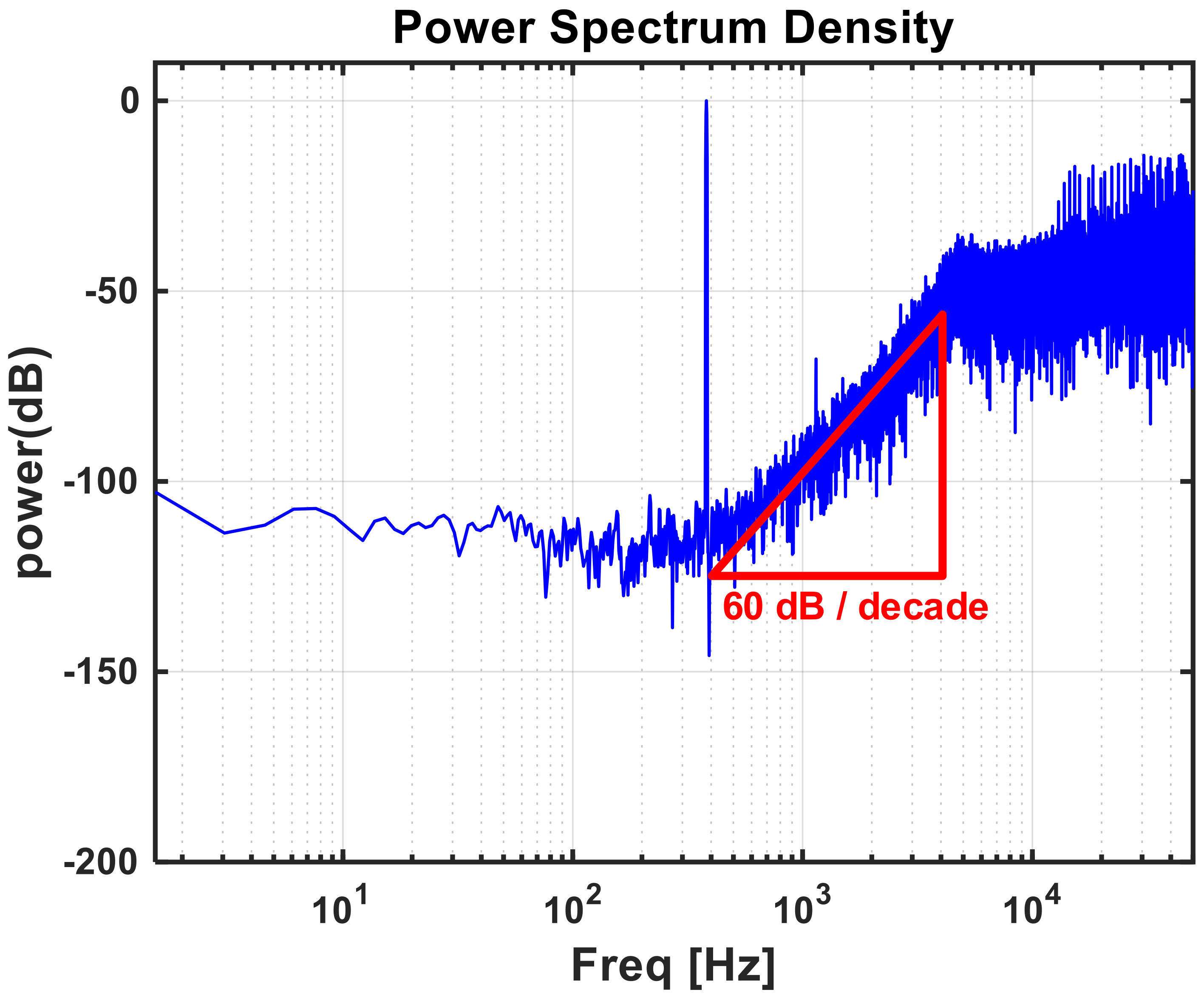
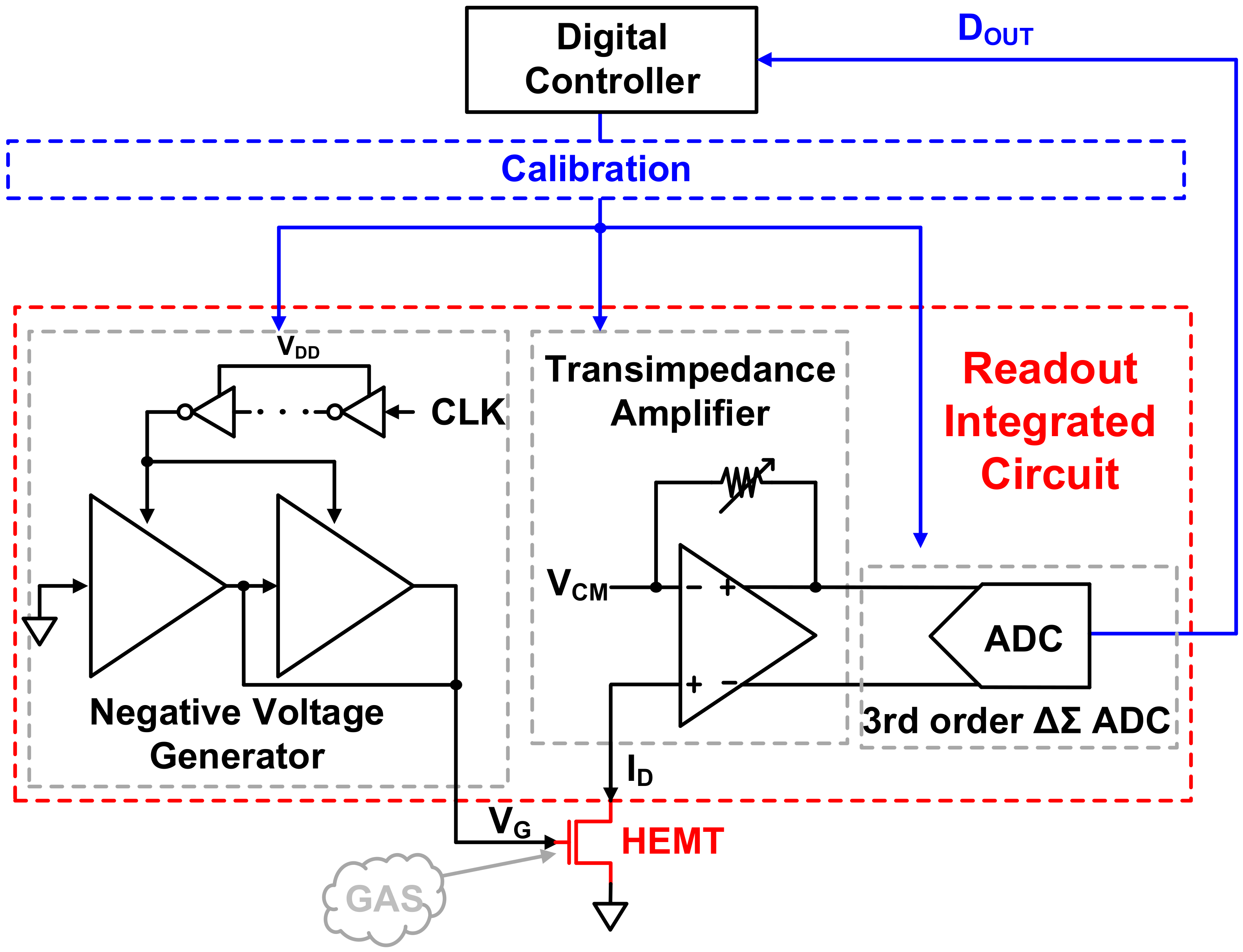
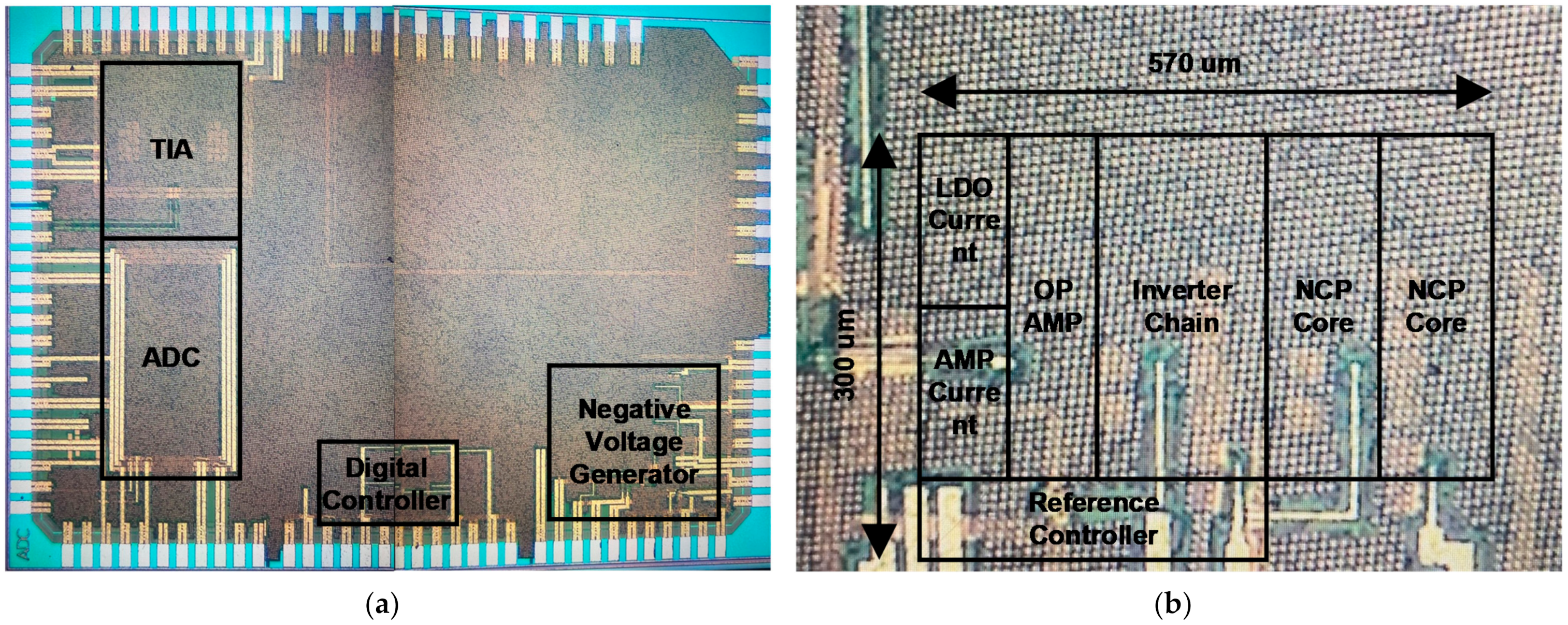
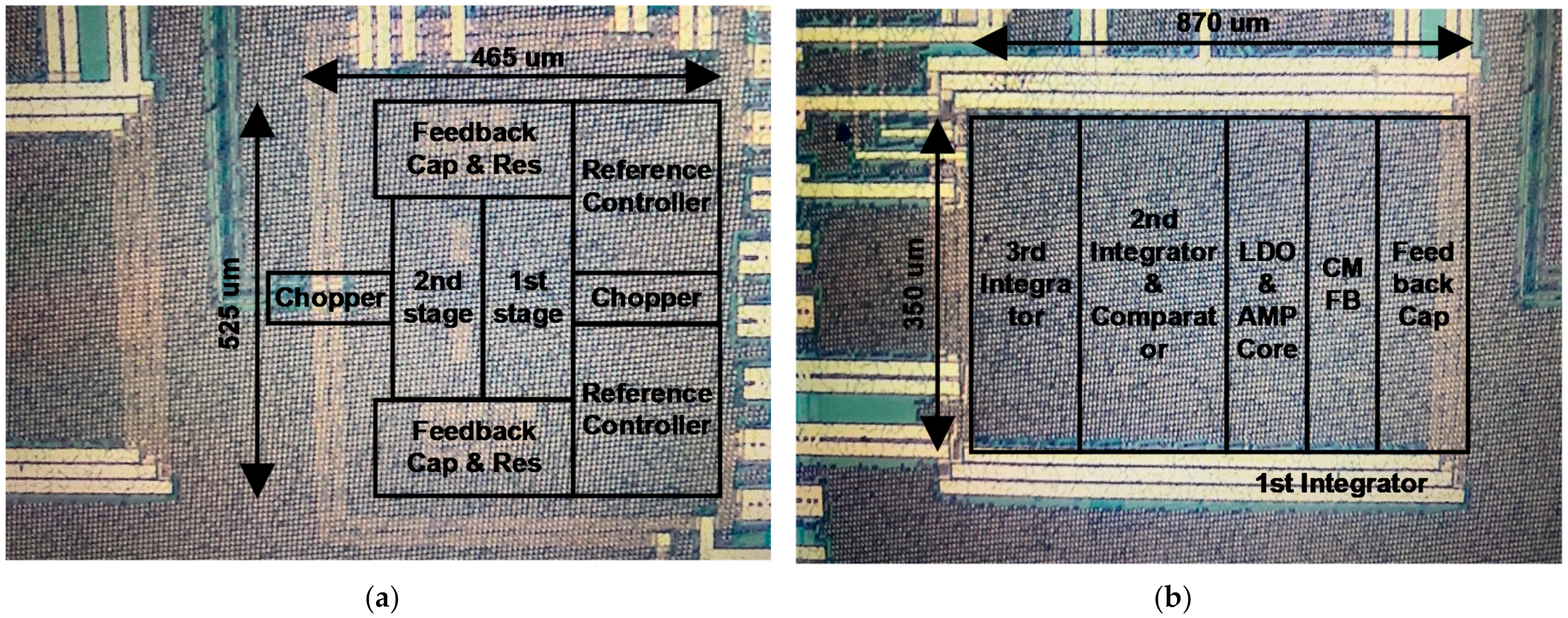


| H2 Concentration (ppm) | Result (Digital Code) | Error (ppm) |
|---|---|---|
| Air | 50 | 0 |
| 50 | 63 | 1.2–2.6 |
| 100 | 78 | 1.8–2 |
| 500 | 99 | 1.2–1.5 |
| 1000 | 116 | 1.8–2.1 |
Publisher’s Note: MDPI stays neutral with regard to jurisdictional claims in published maps and institutional affiliations. |
© 2021 by the authors. Licensee MDPI, Basel, Switzerland. This article is an open access article distributed under the terms and conditions of the Creative Commons Attribution (CC BY) license (https://creativecommons.org/licenses/by/4.0/).
Share and Cite
Lee, S.; Jin, J.; Baek, J.; Lee, J.; Chae, H. Readout Integrated Circuit for Small-Sized and Low-Power Gas Sensor Based on HEMT Device. Sensors 2021, 21, 5637. https://doi.org/10.3390/s21165637
Lee S, Jin J, Baek J, Lee J, Chae H. Readout Integrated Circuit for Small-Sized and Low-Power Gas Sensor Based on HEMT Device. Sensors. 2021; 21(16):5637. https://doi.org/10.3390/s21165637
Chicago/Turabian StyleLee, Seungjun, Joohwan Jin, Jihyun Baek, Juyong Lee, and Hyungil Chae. 2021. "Readout Integrated Circuit for Small-Sized and Low-Power Gas Sensor Based on HEMT Device" Sensors 21, no. 16: 5637. https://doi.org/10.3390/s21165637
APA StyleLee, S., Jin, J., Baek, J., Lee, J., & Chae, H. (2021). Readout Integrated Circuit for Small-Sized and Low-Power Gas Sensor Based on HEMT Device. Sensors, 21(16), 5637. https://doi.org/10.3390/s21165637




